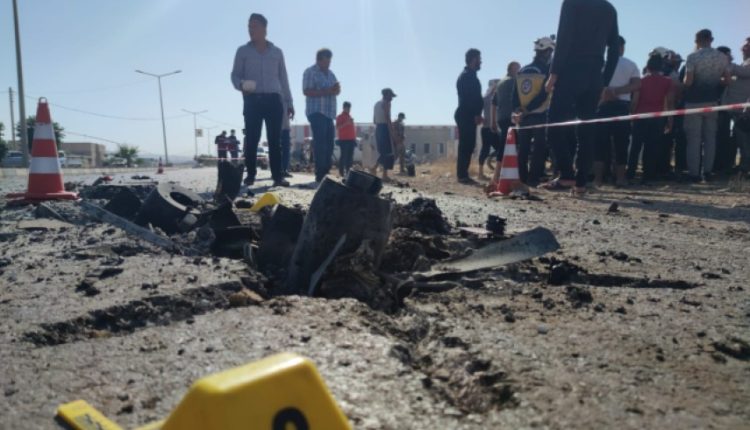Drone Strike Kills Man Linked to Hurras al-Din in Syria’s Aleppo
By Kardo Roj
ALEPPO, Syria (North Press) – A suspected U.S.-led coalition drone strike targeted and killed a man allegedly connected to Hurras al-Din, an al-Qaeda-affiliated group, in the countryside of Jarablus, northern Syria, on Tuesday, according to local sources.
The strike comes amid ongoing counterterrorism operations against extremist factions operating in Syria’s northwest, a region where U.S. and international forces have frequently carried out precision airstrikes against high-profile militant leaders.
A local source told North Press that an unidentified drone, believed to belong to the U.S.-led coalition, launched a missile at a motorcycle near the village of Nasr al-Khairiya in eastern Aleppo countryside. “The strike instantly killed the rider, identified as Fadi Farah, known as Abu Ahmad al-Shami,” the source said.
Several media outlets reported that the target had previously been arrested on charges of belonging to the Islamic State (ISIS) but was later released by the local judiciary. Additionally, he was suspected of having ties to Hurras al-Din, an extremist group that emerged from al-Qaeda’s former Syrian affiliate.
The attack follows a similar drone strike last Friday on the Sarmada–Dana road in Idlib countryside, which killed a senior Hurras al-Din leader. That operation, also attributed to the U.S.-led coalition, targeted a vehicle with a Hellfire missile, eliminating the commander on the spot.
Hurras al-Din, established in 2018, remains one of al-Qaeda’s most active affiliates in Syria. Unlike Hayat Tahrir al-Sham (HTS), which has sought to present itself as a local governance force, Hurras al-Din maintains a strict jihadist ideology and continues to oppose negotiations with Western or regional powers.
The U.S. has classified Hurras al-Din as a terrorist organization and regularly targets its members through drone operations in northwest Syria. American officials argue that such strikes are essential to preventing al-Qaeda-linked factions from regrouping and posing a transnational threat.
Since the territorial defeat of ISIS in 2019, counterterrorism efforts have increasingly focused on remnants of the group, as well as al-Qaeda-affiliated operatives attempting to regain influence in Syria’s ungoverned spaces. The latest airstrikes indicate a sustained international commitment to neutralizing high-profile extremists.
The drone strike in Jarablus raises questions about the broader security landscape in areas under Turkish-backed factions’ control. Northern Aleppo, particularly regions like Afrin and Jarablus, has seen an influx of armed groups with shifting allegiances, some of whom maintain ties with jihadist networks.
Turkey, which controls large swathes of northern Syria through allied Syrian opposition factions, has not publicly commented on the latest strike. However, Ankara has previously clashed with U.S. policy in Syria, particularly regarding Washington’s cooperation with the Syrian Democratic Forces (SDF) in the fight against ISIS.
For local residents, repeated drone strikes heighten tensions and fears of further instability. While some see the elimination of jihadist figures as a step toward security, others worry about potential retaliatory attacks or escalating military operations in the area.
With recent high-profile drone strikes targeting jihadist leaders, the U.S.-led coalition is likely to continue its counterterrorism operations in northern Syria. However, questions remain about the long-term strategy for securing areas where extremist groups continue to operate in the shadows.
As the security situation remains fragile, the coming weeks could see further developments, particularly in how local factions and regional powers respond to increased drone activity over their controlled territories.

